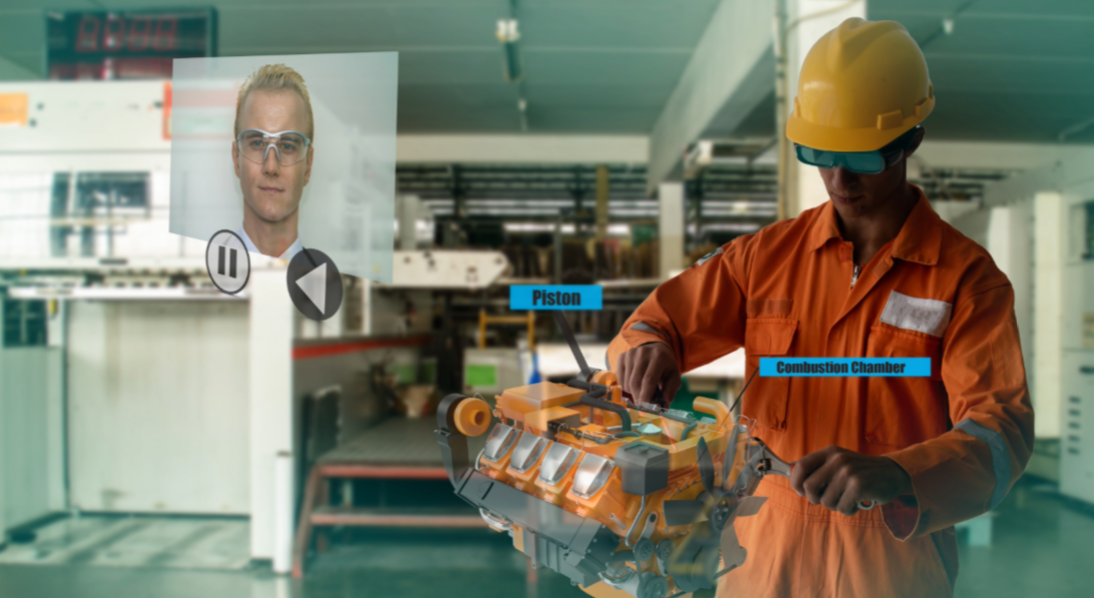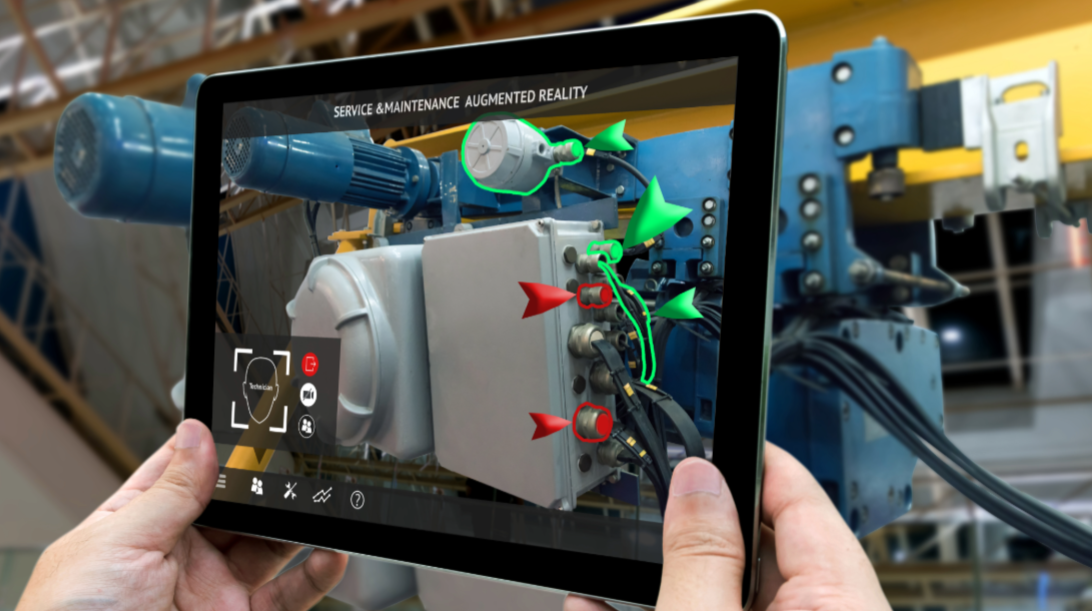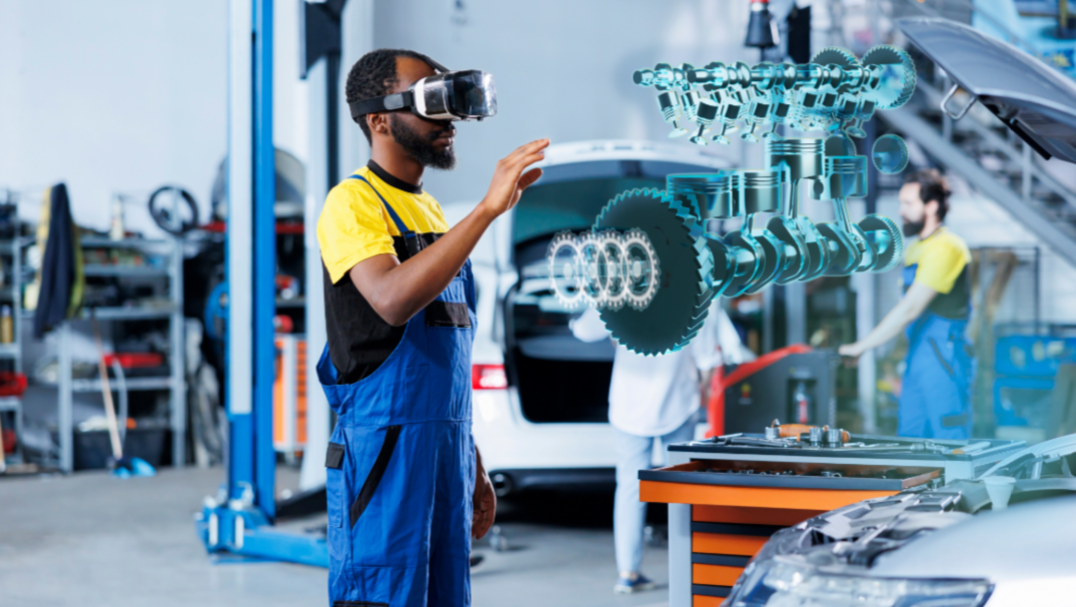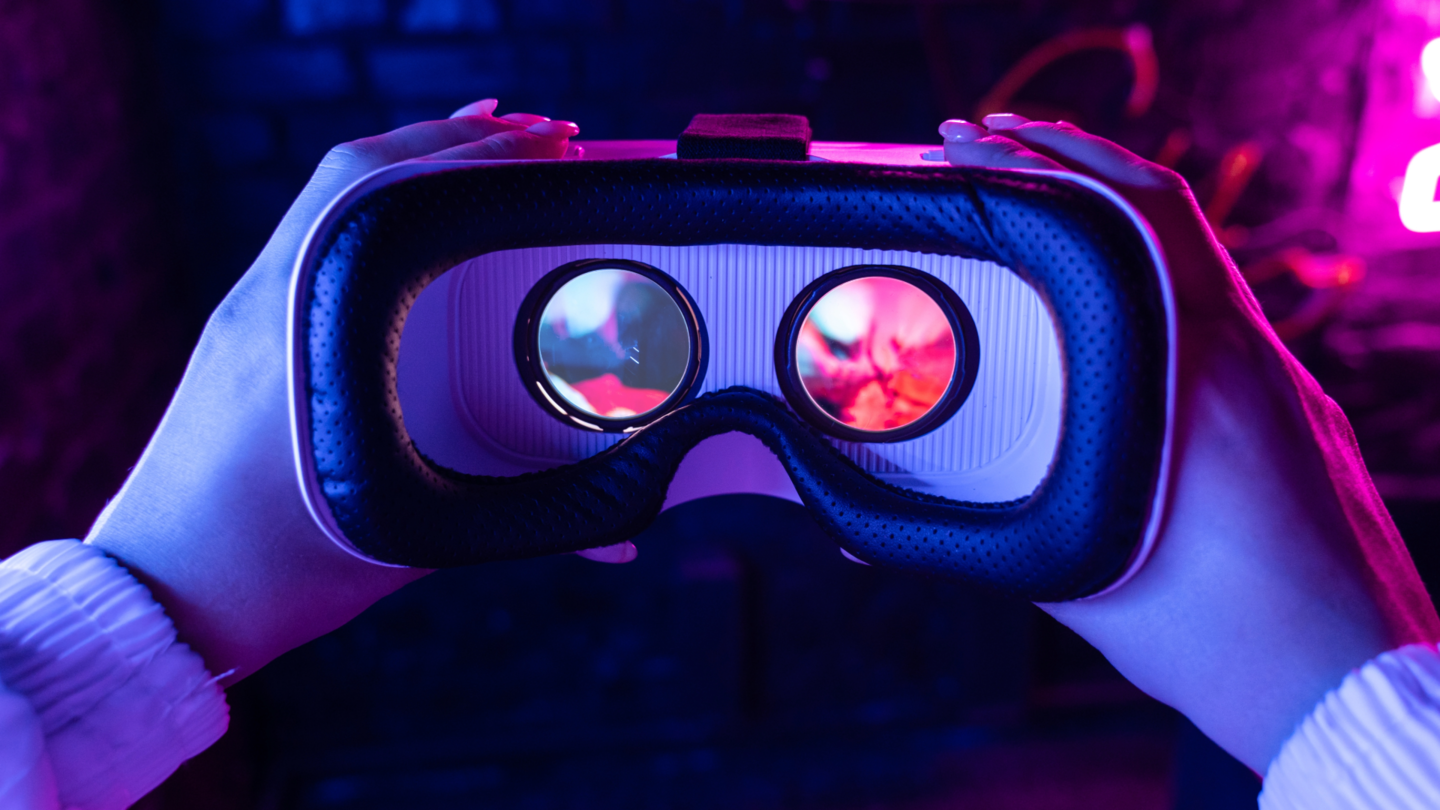Have you ever found yourself in a labyrinth of complex machinery, wishing for a guide to appear right before your eyes? Well, the future is now. Leveraging Augmented Reality (AR) for Maintenance Training and Troubleshooting transforms this wish into Reality. Imagine technicians equipped with nothing but AR glasses receiving real-time instructions overlaid on the very equipment they're fixing.
The days of flipping through dusty manuals are fading away. Instead, AR brings us into an era where mistakes dwindle and efficiency soars. It's not just about saving time; it's about revolutionizing how we approach maintenance tasks.
A study pointed towards aviation maintenance showing remarkable improvement thanks to AR-enhanced visualization, which led to better performance and safety measures. The adoption of this technology is not limited to the aviation sector; it's rapidly infiltrating various fields, igniting significant changes.
Why does this matter? Because every second counts in our fast-paced world. And when technology offers us a way to do more than keep up—actually to get ahead—it's an opportunity too golden to pass up. Embracing these advances means we can tackle challenges more efficiently and seize new opportunities confidently, ensuring that we're not only keeping pace but setting the pace.
The Evolution of Maintenance Training with Augmented Reality (AR)

Understanding Augmented Reality in Maintenance
Gone are the days when augmented Reality (AR) was just a cool feature on Snapchat filters. Today, it's transforming how we approach maintenance training. Think about it—instead of flipping through dense manuals or watching outdated videos, technicians can now see step-by-step repair instructions overlaid directly onto the equipment they're working on. It's like having a virtual expert guiding you every step of the way.
This isn't sci-fi—it's happening right now. Studies show that AR technology revolutionizes industries by providing advanced visualization and real-time information, turning complex tasks into interactive experiences.
The Impact of AR on Training Efficiency
So, how exactly is AR transforming the way we learn and become proficient in our skills? A lot. With AR, newbies can learn at their own pace without risking damage to critical machinery—or themselves. They get instant feedback and can repeat processes until they are perfect. Experienced techs aren't left out either; they use AR to stay up-to-date with the latest procedures and tech advancements.
- No more guesswork: You see exactly where each part goes.
- Faster learning curve: Interactive guides make complex concepts easier to grasp.
- Safety first: Learn dangerous tasks in a risk-free environment before tackling them.
We're talking about an overhaul in how knowledge is passed down and skills are honed—ensuring everyone's ready for whatever comes next in our fast-evolving world. And let's be honest: who wouldn't want a personal guide making sure you nail it every time?
At its core, augmented Reality transforms our approach to maintenance and expands the horizons of training realms, enabling us to envision a future filled with even greater possibilities. Welcome to maintenance training 2.0.
Key Takeaway:
AR turns maintenance training on its head, making learning faster, safer, and more interactive. It's not just about fixing things anymore; it's about mastering skills in a new way.
Enhancing Troubleshooting Processes Through AR

Step-by-Step Repair Instructions via AR
Gone are the days of flipping through dusty manuals or squinting at tiny diagrams on a screen. Augmented Reality (AR) solutions have changed the game for maintenance operations and repair tasks. Imagine popping on a pair of smart glasses and seeing crystal-clear, step-by-step instructions floating right in front of you. It's like having a pro technician guiding every move by your side.
This isn't sci-fi; it's real tech making real changes today. With AR, technicians get exactly what they need: precise directions tailored to the task. No more guesswork or backtracking because something wasn't clear the first time.
Real-Time Guidance for Complex Repairs
Sometimes repairs aren't just about replacing a part – they're puzzles needing that Sherlock Holmes touch. That's where AR steps up its game even further, offering instructions and real-time guidance for those head-scratching moments.
Leveraging live data analytics and overlaying digital information onto physical objects in real time lets technicians spot issues faster than ever. Hence, tackling intricate challenges becomes swifter, slashing delays substantially – a universally welcomed development.
In essence, troubleshooting with AR doesn't just make jobs easier; it makes them smarter, too. Technicians armed with this tech don't waste time on trial-and-error approaches anymore because they have all the insights they need in their field of vision.
To wrap things up neatly – if efficiency had a name in today's maintenance tasks and equipment upkeep? Spot on, it's Augmented Reality at the helm of revolutionizing maintenance and equipment management. Believe me when I say that once you've experienced how seamlessly AR integrates into these processes… well, let's say going back to old ways would feel like trying to text on a flip phone after getting used to smartphones.
Key Takeaway:
Say goodbye to outdated manuals and confusing diagrams; with augmented Reality (AR) support, maintenance becomes smarter, quicker, and more effective. AR technology provides step-by-step repair instructions and real-time guidance, revolutionizing how we handle training maintenance tasks. It's akin to transitioning from a basic flip phone to a sophisticated smartphone in repairs. Plus, AR empowers technicians to capture knowledge effortlessly, ensuring critical equipment is handled precisely while minimizing potential hazards.
The Role of AR in Equipment Maintenance and Operations

Predictive Maintenance with AR Integration
Imagine a world where your equipment whispers its secrets, telling you exactly when it needs a little TLC before breaking down. Does it sound like sci-fi? Well, thanks to augmented Reality (AR), this is now the stuff of Reality. By integrating AR into predictive maintenance strategies, we're not just fixing machines but giving them a voice.
Predictive maintenance has always been about staying one step ahead. And with AR glasses, technicians no longer rely on guesswork or routine checks. They see real-time data overlaid directly onto the machine they're inspecting. With these glasses, it's as if you've been granted the ability to foresee troubles looming on the horizon, preventing expensive interruptions before they unfold.
Remote Assistance for Immediate Problem Solving
Gone are the days when solving complex machinery problems meant flying out an expert from halfway across the globe. Now, remote assistance through AR brings the experts right into your plant, virtually speaking.
- No more waiting: Instant access to expertise means quicker fixes.
- Cut travel costs: Why fly someone out when you can beam them in?
- Better training opportunities: New techs learn by watching experts solve real-world problems in real-time—no classroom required.
It's far more than merely donning high-tech spectacles and dubbing it the next big thing. It's about harnessing technology to make equipment maintenance smarter, faster, and more efficient than ever before. We're talking serious business benefits here – minimizing errors, saving time, and slashing operational costs left and right.
At its core, augmented Reality is fundamentally altering our strategies for machine upkeep and completely transforming how we think about preventative measures and solving technical issues. If there was ever a time to get excited about what tech could do for industry standards—it's now. So let's embrace these changes head-on because if anything is clear, The future of equipment upkeep looks incredibly bright with AR leading the charge.
Key Takeaway:
AR in maintenance isn't just cool tech—it's a game-changer. It lets equipment "talk" for predictive care, brings expert help instantly without travel, and turns complex fixes into efficient learning sessions. Say hello to smarter, faster operations with serious savings.
Maximizing Efficiency and Reducing Errors in Maintenance Tasks
Streamlining the Learning Curve for New Technicians
Let's face it: stepping into the maintenance world can feel like walking through a maze blindfolded. But what if I told you that augmented Reality (AR) is turning this around? AR is not just for catching Pokémon or trying on virtual clothes anymore. It's revolutionizing how we approach effective maintenance.
New technicians often need help finding themselves in manuals or lost in translation with traditional training methods. Enter AR – a game-changer that's cutting down the learning curve to size.
- Enhanced efficiency: Imagine putting on smart glasses and seeing step-by-step instructions floating right before your eyes while working on real equipment. That's AR making life easier.
- No more head-scratching moments: Instead of flipping through pages or scrolling endlessly, newbies get visual cues and interactive guides as they work.
This isn't sci-fi; it's happening now, ensuring everyone hits the ground running from day one.
Achieving Greater Accuracy in Repairs
Gone are the days when things don't seem to fit right, even after hours of tinkering around. With AR leading the charge, we're witnessing fewer errors than ever during repairs — music to any technician's ears.
- Precise Instructions: We're talking about overlaying digital information onto physical objects – think Iron Man tech, but for fixing stuff. This ensures that every screw finds its rightful place without guesswork.
- Saving time and sanity: Not only does this significantly cut down repair times, but it also minimizes frustrations for rookies and veterans alike. In fact, studies show that adopting these advanced tools leads to an incredible drop in installation errors because everyone has access to accurate data at their fingertips.
Key Takeaway:
AR is flipping the script on maintenance training and repairs, slashing learning curves and error rates by offering interactive, step-by-step guides and precise digital overlays. It's like having a cheat sheet for real-world tasks.
Integrating Machine Learning and AI with AR for Advanced Maintenance Solutions
Data Analytics for Equipment Risk Identification
Let's face it: the old-school way of guessing when a machine will break down is as outdated as flip phones. Enter the superhero team-up of our time: machine learning, artificial intelligence (AI), and augmented Reality (AR). These dynamic trios are revolutionizing how we keep our gear in tip-top shape.
Gone are the days of reactive maintenance. We can predict issues before they whisper, "I'm gonna break." How? We enable machines to communicate with us by interpreting the vast amounts of data they generate. Machine learning digs through mountains of this chatter, finding patterns that humans might miss.
AI-Powered Predictive Maintenance Strategies
Predictive maintenance sounds fancy but think of it as your car's dashboard warning light—much smarter. Leveraging artificial intelligence, it scrutinizes sensor-derived data on machinery to signal malfunctions before they occur preemptively.
- Performance modeling: This isn't just about looking at past breakdowns. It's about predicting future ones by understanding how machines behave under different conditions.
- Risk identification: Every piece of equipment has its quirks. AI helps identify what could go wrong based on historical data and trends.
- Saving time and money: Fixing a machine before it breaks means less downtime and more productivity—not to mention avoiding those hefty emergency repair bills.
This approach isn't just smart; it's necessary in today's fast-paced world, where every second counts. And let's not forget AR glasses – giving technicians superpowers by overlaying digital information onto physical objects in real time. They no longer need to juggle tools and manuals because everything they need is in their field of vision.
By marrying these innovations, we streamline intricate operations, offering pinpoint guidance to workers and conserving valuable assets. Imagine seeing inside a machine without taking it apart or having step-by-step guidance from an expert beamed directly into your line of sight. That's not sci-fi—it's here now, thanks to advancements in AR coupled with insights provided by AI and machine learning analytics. The future of maintenance looks bright indeed—or should we say 'augmented'?
Please forget to guess when machines will break down. Machine learning, AI, and AR are teaming up to predict issues before they happen, transforming maintenance with data-driven insights and real-time guidance. It's not just smart; it's essential for saving time and money and boosting productivity.
Practical Applications of AR in Industrial and Machine Maintenance
Case Studies on Successful AR Implementations in Industry
The world of industrial equipment maintenance is no stranger to challenges. From diagnosing machine faults to navigating the intricate steps involved in AR machine maintenance activities, technicians have their work cut out for them. Imagine, though, a world where Augmented Reality (AR) completely transforms our method of tackling these hurdles. Imagine we're exploring actual scenarios where augmented Reality has changed the game.
Bosch: Ever heard of turning complex car repairs into a walk in the park? Bosch did just that with their AR application. This brilliant application virtually places navigation markers and guidelines right on the cars themselves, transforming those elusive parts into unmistakably obvious highlights. The result? Auto technicians spend 15% less time on each MRO activity step than traditional methods.
Boeing: When it comes to aviation, every second counts. Acknowledging the critical nature of time in aviation, Boeing adopted AR with their groundbreaking ARMAR initiative to enhance and expedite maintenance training. By integrating augmented Reality into their procedures, they've streamlined the learning process and significantly reduced repair times by up to 30%. Now, that's what I call flying high with technology. You'll be able to read more about this leap forward here.
Surely, these stories make one crystal clear: when it comes to maintaining our machines—whether cars or colossal airplanes—Augmented Reality isn't just helpful; it's transforming industries as we know them.
If there was ever a doubt about AR being relegated solely to gaming or entertainment spheres, these case studies shatter such notions entirely. It's fascinating how something as futuristic-sounding as augmented Reality is now grounded firmly within sectors known for grease-stained manuals rather than glossy VR headsets.
In essence, whether you're fine-tuning engines or ensuring aircraft are sky-worthy, embracing augmented Reality seems not just smart but essential—for efficiency's sake today and innovation tomorrow.
Key Takeaway:
AR isn't just for games; it's revolutionizing machine maintenance, simplifying complex repairs, and slashing downtime. From Bosch to Boeing, embracing AR means working smarter, not harder.
Overcoming Implementation Challenges of Augmented Reality Systems
Addressing Security Concerns in AR Systems
You've heard it before, and I'll hear it again: security is king, especially when we're talking about the shiny world of augmented Reality (AR). With challenges in implementing augmented Reality, like keeping those pesky hackers at bay, things can get complicated.
But fear not. Unlocking the secret is all about setting up strong protections right from the start. Think encryption that would make Fort Knox jealous and access controls tighter than your favorite pair of jeans after Thanksgiving dinner. It's all about ensuring only the right eyes peep into your AR universe.
Custom-Built Solutions for Unique Business Needs
No two businesses are cut from the same cloth; why should their AR solutions be? Here's where custom-built solutions strut onto center stage—tailored suits in a world full of off-the-rack options.
Sure, diving into AR software deployment with custom specs might sound daunting. But think about this: what's better than having an AR system that fits your business needs like Cinderella's slipper? One word – nothing.
We're talking about a platform so intuitive that even Bob from accounting could use it without sweat. A system designed to streamline processes, slash training times, and, yes – knock those overhead costs down several pegs.
The road to integrating cutting-edge tech like AR isn't paved with roses – there will be thorns along the way. Yet by tackling security head-on and crafting bespoke solutions that whisper sweet nothings to our unique business challenges… Well, folks, that's how we win at innovation.
Empowering Field Technicians with Wearable AR Devices

Advantages of Using Smart Glasses for On-Site Repairs
Enter wearable AR (Augmented Reality). It's like having a superpower right in your eyewear. Think about it – smart glasses overlaying step-by-step repair instructions directly onto what you see. Yes, please.
This transcends mere convenience, heralding a transformative shift in approaching tasks. Imagine being on-site and immediately accessing all the necessary info without ever taking your eyes off the task. This is real-time guidance taken to a whole new level.
But there's more – these devices aren't just one-trick ponies. They're equipped with cameras, microphones, and speakers, enabling live sharing of visuals and conversations with experts miles away if things get tricky. Suddenly, every technician has an expert in their corner.
How Wearable Devices Transform Field Service Operations
The transformation here is profound yet simple: efficiency skyrockets while errors take a nosedive.
- Saving Time: No more flipping through pages or scrolling on phones looking for information; everything's right before your eyes.
- Saving Money: Fewer mistakes mean less rework, which means happier clients and lower costs.
- Better Training: New techs can learn faster by watching annotated guides overlaid on real-world objects as they work – accelerating their learning curve dramatically. FieldCircle highlights how augmented Reality revolutionizes maintenance practices, making this point clear.
- Happier Customers: Faster fixes mean better service experiences; plus, showing up with state-of-the-art tools doesn't hurt either.
Lest we forget, wearable AR also opens doors to capturing invaluable data during each service call — insights into common faults, time spent per repair type, customer feedback post-service… The list goes on, but think about it — this data goldmine could redefine how services are offered moving forward. In essence, wearing AR glasses makes technicians walking repositories of knowledge & expertise—armed and ready not just to fix but anticipate needs even before they potentially arise. This NSFlow article showcases augmented Reality in aviation maintenance, highlighting its potential to transform the industry by making complex tasks simpler and ensuring that repairs meet high standards of quality and safety.
Wearable AR turns field techs into supercharged problem-solvers, giving them real-time info and expert backup. This boosts efficiency, cuts costs, speeds up training, delights customers, and gathers crucial data to improve future services.
Future Directions: AI and AR as Key Enablers in Field Service Management
Innovations Shaping the Future of Maintenance and Repair
Listen up, everyone! The future is at our doorstep, dressed in the latest AI and AR technology. Gone are the days when maintenance involved tightening screws. Today, it's all about sophisticated networks predicting when those screws might loosen.
According to Gartner, by 2025, more than half of all field service management deployments will incorporate mobile augmented reality collaboration tools. That's a significant shift. But why wait until 2025? The future is here, brimming with advancements poised to transform the maintenance process and repair processes. It's time to embrace these innovations, complete with advanced equipment specifications, and revolutionize how we approach maintenance and repair tasks.
Leveraging AI for Process Optimization
We're not just talking about any upgrade; we're discussing a game-changer here. Imagine sending out your best technician without leaving the office – because you can.
With AI-enhanced solutions, technicians get virtual hands-on help from experts miles away or access a digital twin model for troubleshooting—all through their AR glasses. This means less guesswork, fewer errors, and more fixes done right the first time.
- Predictive Maintenance: Machines talk – well, sort of – via data analytics powered by machine learning algorithms that predict failures before they happen.
- Data-Driven Decisions: Making choices based on gut feeling? Old school. Now, decisions are informed by heaps of data analyzed in real time to keep everything running smoothly.
- Elevated Training Sessions: A new hire? No problem. Virtual training sessions using augmented Reality put them right in action but safely off-site till they're ready to dive into live projects.
This is not sci-fi fantasy; this happens when you mix AI with a dash (or two) of AR—creating smarter workflows that save time while boosting efficiency across boardrooms worldwide. It turns routine checks into strategic moves, making every part count towards something bigger—a smoother-running world where machines hardly break down because we've gotten so good at keeping them up. So yes, the "future" comes knocking. We're open.
Key Takeaway:
Welcome to the future of maintenance and repair, where AI and AR technology are revolutionizing once routine tasks into strategic and efficient processes. By 2025, we anticipate that more than half of field service management will harness the power of augmented reality support and AI for enhanced problem-solving and training. Experienced technicians and maintenance personnel can elevate their skills and efficiency to new heights with these advancements.
FAQs in Relation to Leveraging Augmented Reality (Ar) for Maintenance Training and Troubleshooting
What are three ways virtual Reality or augmented Reality can help areas in training and maintenance?
AR speeds up learning, cuts mistakes by overlaying info, and allows practice on digital twins without real-world risks.
How is augmented Reality used in maintenance?
Maintenance crews use AR to see machine internals, get repair steps live, and share visuals with remote experts for advice.
What is augmented Reality primarily used for in expert maintenance systems?
In expert systems, AR identifies issues fast, guides through fixes step-by-step, and updates records automatically after repairs.
How is augmented Reality used in training?
Trainees utilizing augmented reality (AR) technology can safely tackle simulated challenges. They provide real-time feedback through interactive simulations, allowing trainees to learn by doing and addressing errors virtually before handling actual equipment.
Conclusion
Thus, our exploration of Augmented Reality (AR) has revealed its potential to transform how we learn maintenance and tackle technical problems. Gone are the days of thumbing through worn-out manuals or second-guessing repair steps. AR isn't just changing the game; it's redefining how we play it together.
Utilizing Augmented Reality for Maintenance Training and Troubleshooting is akin to having a knowledgeable mentor by your side—except this one can overlay digital insights onto real-world challenges, transforming intricate tasks into simple solutions. Augmented Reality isn't just streamlining tasks; it's elevating our abilities into territories once deemed fit only for the pages of a sci-fi novel. This technology serves as a beacon to guide technicians toward mastery of their craft.
The beauty? It's not about replacing humans but empowering them with tools that dramatically enhance their skills, reduce errors, and slash downtime. We're standing at a crossroads where efficiency meets innovation, watching as AR blazes trails across industries.
This isn't merely advancement—it's transformation on an epic scale. And while Hollywood spins tales of tech gone rogue, AR emerges as our ally here in the real world. As technicians don augmented glasses and step confidently toward challenges ahead, they're not just performing repairs but shaping tomorrow's landscape today.
In the maintenance world, we've unlocked a door to endless possibilities, where errors fade away and confidence soars—thanks to our embrace of Augmented Reality. By embracing this technology, we're not just progressing but shaping a future that could exceed our wildest dreams, immersing ourselves in digital worlds of innovation and advancement.
 For immediate assistance, please call us at (512) 328-3235
For immediate assistance, please call us at (512) 328-3235



